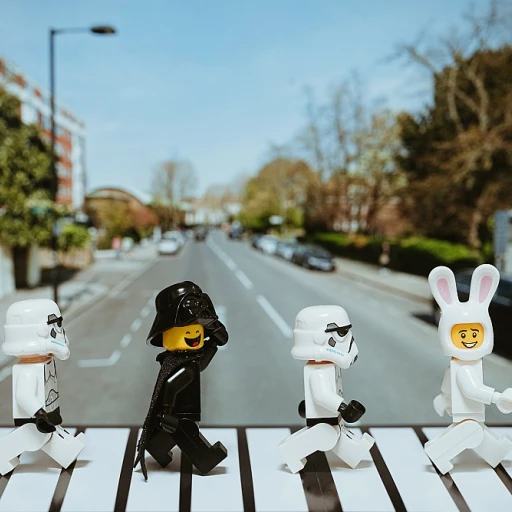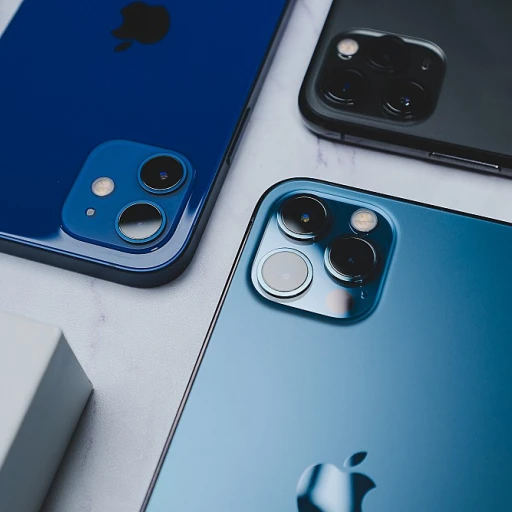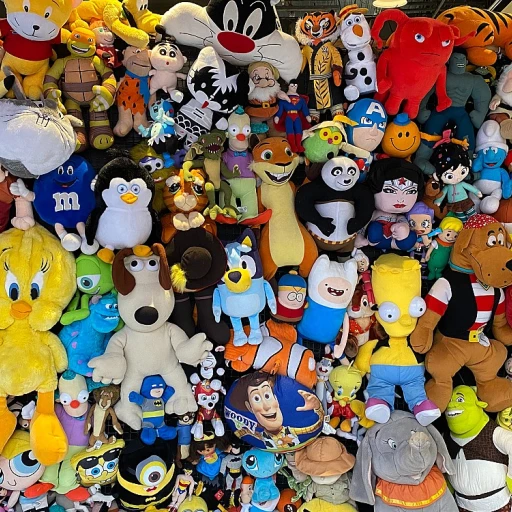The legacy of Dom Perignon: a brief history
First beginnings and heritage
Before diving into the world-renowned status and premium prices of Dom Perignon, it helps to look back at its roots. This champagne isn't just a name you hear at high-end parties or see in sophisticated wine cellars; it's got a legacy that stretches back centuries, deeply intertwined with the history of champagne itself.
The story begins with Dom Pierre Perignon, a Benedictine monk at the Abbey of Hautvillers in France. Often credited with developing the traditional method of making champagne, his innovations in the 17th century laid the groundwork for what would become one of the most prestigious champagne brands in the world. His dedication to mastering his craft made such an impact that the champagne house, Moet & Chandon, named their premier cuvée in his honor.
What truly sets Dom Perignon apart from other luxury champagnes is this rich heritage. Imagine sipping a glass of champagne that’s steeped in history and made with techniques perfected over centuries. It’s a blend of tradition and expertise, something you can't put a price on but clearly reflected in the market value of these exquisite bottles.
Fast forward to the modern era, and the figures like Richard Geoffroy and Vincent Chaperon, who have served as cellar masters, have further honed the quality and mystique of Dom Perignon. Their deep understanding of the terroir and commitment to quality ensures that each bottle carries the legacy forward.
From the vineyards of Bordeaux to the high-end wine shops in the United States, the devotion to maintaining this legacy is evident. Celebrities like Lady Gaga and Lenny Kravitz have not only endorsed but actively collaborated with the brand, adding their unique flair to the already prestigious label.
This blend of historical significance and modern influence is a potent combination, making every bottle of Dom Perignon not just a drink, but a conversation piece. Whether it's the famous Dom Perignon Brut, their vintage champagne, or special collaborations like the ones with Jeff Koons or Michael Riedel, each offers something unique that resonates with both connoisseurs and casual drinkers alike.
The meticulous production process
The intricate steps in crafting Dom Perignon champagne
Dom Perignon's production process is a masterpiece in itself, involving a series of meticulous steps to ensure each bottle lives up to its legendary status. Vincent Chaperon, the current Chef de Cave at Dom Perignon, oversees the entire process with the utmost precision, a testament to his expertise.The journey begins in the renowned vineyards of Moët & Chandon in France, specifically the Grand Cru vineyards, which account for over 90% of the grapes used. The primary grapes are Pinot Noir and Chardonnay, sourced exclusively from the best crus of the region. This selection is crucial, as it plays a significant role in the champagne's unique flavor and quality.
Harvesting is done by hand to select only the finest grapes, a practice adhered to since Pierre Perignon's time at the Abbey of Hautvillers. Each grape is picked at the perfect ripeness, ensuring only the best make it to the press. The pressing stage itself is critical, involving gentle pressing to extract the purest juice without any bitterness.
Fermentation takes place in stainless steel vats, maintaining the purity and freshness of the juice. This is followed by assemblage, where the Chef de Cave selects the blend of base wines from different vineyards, vintages, and grape varieties to create the distinct Dom Perignon profile. This stage is akin to an art form, requiring a deep understanding of how different components complement each other.
The second fermentation, known as tirage, happens in the bottle, where yeast and sugar are added to start the sparkling wine’s creation. The wine then undergoes aging on the lees for at least seven years, though some vintages may age for over a decade. This prolonged aging process is what gives Dom Perignon its complexity and depth.
Disgorgement follows, where the sediment from the lees is removed, and a dosage of wine and sugar (the liqueur d'expédition) is added to achieve the desired sweetness level. The bottles are then sealed with a cork and undergo further aging before they are ready for release.
Each step in this process, from the vineyard to the bottle, is painstakingly managed to ensure that every bottle of Dom Perignon is a true representation of luxury and quality. No wonder enthusiasts like Robert Parker and even celebrities like Lenny Kravitz revere this champagne for its excellence.
In summary, the meticulous production process, hands-on approach, and historical expertise all contribute to the uniqueness of Dom Perignon. This dedication to quality and tradition is reflected in its price, making it a true investment for any champagne lover.
What influences the price of Dom Perignon?
Factors influencing the price of Dom Perignon champagne
Champagne enthusiasts and collectors often wonder why Dom Perignon stands at a premium compared to other brands. Let's break down the elements that drive its price and justify its value.The heritage and reputation
Named after Pierre Pérignon, a Benedictine monk who significantly contributed to the development of champagne, Dom Perignon has a rich history that adds to its allure. This legacy, coupled with its uncompromising quality, makes it a highly sought-after brand among connoisseurs. The association with historical figures, such as Princess Diana and celebrities like Lady Gaga and Lenny Kravitz, further elevates its status.Vincent Chaperon’s expertise
The role of a cellar master in crafting Dom Perignon cannot be understated. Vincent Chaperon, following in the footsteps of Richard Geoffroy, brings a meticulous approach to the champagne-making process. His attention to detail ensures that each bottle maintains the highest standards, contributing to the higher production costs and final price.Vintage specificity
Unlike many other champagnes, Dom Perignon is only produced in excellent vintages. This means that each released vintage comes with its unique characteristics, adding rarity and exclusivity. For instance, the Dom Perignon Luminous Vintage has a distinctive bottle that lights up, adding a modern twist to traditional luxury. Limited production years result in higher demand and increased value.Quality of ingredients
The best Pinot Noir and Chardonnay grapes are handpicked from Grand Cru and Premier Cru vineyards. These high-quality ingredients ensure the complexity and depth of Dom Perignon's flavors. The meticulous selection process and the reliance on only the finest grapes, such as those from the Abbey of Hautvillers, undeniably drive up costs.Production process
The production methods used for Dom Perignon are both labor-intensive and time-consuming. The wine undergoes a lengthy maturation process in the cellars of Moët & Chandon. For instance, the Dom Perignon Vintage 2008 was left to age for nearly a decade before it was deemed ready for release. This long aging period not only enhances the champagne’s quality but also increases its price.Packaging and presentation
Dom Perignon’s packaging and presentation cases are designed to reflect its luxury status. From sleek bottle designs to special editions created by artists like Jeff Koons and Michael Riedel, the packaging itself can be a work of art. Special editions and collaborations, such as the ones with Moët Hennessy, often come at a premium.Comparative market position
When compared to other luxury champagnes like Veuve Clicquot and Krug, Dom Perignon positions itself as a symbol of prestige. It's not just about the liquid in the bottle; it’s about the entire experience. This positioning within the marketplace allows it to command a higher price. Noted wine critics like Robert Parker and influential figures in the industry consistently give it high ratings, reinforcing its market value. In understanding Dom Perignon's price, it’s clear that a confluence of history, expertise, quality, rarity, and presentation all play pivotal roles.Vintage vs. non-vintage: understanding the difference
The essence of vintage champagne
When someone mentions Dom Perignon, the term “vintage” often follows closely. But what does this really mean? Well, let’s break it down. Vintage champagne, like a vintage Dom Perignon, is produced from grapes harvested in a single year, unlike non-vintage varieties which blend grapes from multiple years. This single-year approach is at the heart of what sets a Dom Perignon bottle apart.
Crafting excellence
Creating vintage Dom Perignon is an art. Each vintage tells its own story, shaped by the climatic conditions of that particular year. Vincent Chaperon, the current Chef de Cave, and his team meticulously select the best grapes from the best vineyards. According to Champagne Dom Perignon's policies, if the quality doesn't meet their standard, the champagne will not be produced as a vintage.
Consider the 2008 Dom Perignon, hailed by wine critics, including Robert Parker, for its outstanding quality. It's not just about the taste but the story behind each vintage. This uniqueness inevitably influences the Dom Perignon price.
Consistency amidst variation
The consistency of Dom Perignon wines, year after year, speaks largely to the expertise and dedication invested in their creation. For instance, experts like Richard Geoffroy, who served as Dom Perignon's Chef de Cave for over two decades, have contributed significantly to maintaining this level of excellence.
The difference between a stellar vintage and a regular one might not only hinge on the wine's flavor profile but its aging potential. Vintage Dom Perignon champagnes are known for their ability to age gracefully, often improving over decades. For collectors and connoisseurs, this means that a bottle dom perignon bought today can be a treasure ten years from now, adding another layer to its value.
Package and presentation of vintage champagne
Packaging also plays a crucial role in the allure of vintage Dom Perignon. Special editions like the collaboration with Lenny Kravitz or the Lady Gaga limited edition add a unique flair and often come in elaborate presentation cases. This touch of exclusivity and craftsmanship ensures that each purchase feels like a lavish gift, which also reflects in the Dom Perignon price.
When to add to cart?
Deciding to add a bottle of Dom Perignon to your cart isn’t just about a single purchase. It’s an investment in a part of history, a celebration of expertise, and a taste of unparalleled elegance. So, whether you're toasting a significant year or simply indulging in the finer things, understanding the essence of Dom Perignon's vintage champagne helps justify the price tag.
The role of packaging and presentation
The aesthetics of elegance: Dom Perignon presentation
When it comes to Dom Perignon champagne, it's not just about the liquid gold inside the bottle. The brand takes its packaging and presentation as seriously as its winemaking. A significant element that contributes to the Dom Perignon price is the exquisite and meticulous design of its bottles and packaging.
From the iconic slender green bottle to the intricate design of the labels, every aspect is crafted to exude luxury. You'll notice the elegant black presentation case that often accompanies a bottle of Dom Perignon. These cases are not just for show—they offer superior protection and enhance the overall gifting experience.
Limited editions, like the Dom Perignon x Lady Gaga collaboration, come in specially designed packaging that doubles as a piece of art. This collaboration saw the creation of an iridescent case, featuring a burst of color, symbolizing creativity and celebration. Such unique editions often see a surge in demand, further boosting their value.
Furthermore, the brand has enlisted the creative genius of artists like Michael Riedel and Jeff Koons for these limited runs. For example, the Dom Perignon x Jeff Koons Balloon Venus edition, packaged in an intricately designed holder, doesn't just look spectacular—it adds substantial value, offering an investment opportunity for collectors.
Even the magnum bottles with their grander size and impressive presentation are coveted by enthusiasts. They come in beautifully designed cases, making them perfect for grand celebrations or prestigious gifts. The 2008 vintage luminous edition, a special bottle that glows in the dark, redefines what luxury in a bottle can mean.
According to Vincent Chaperon, the current Dom Perignon Chef de Cave, the attention to presentation is an integral part of the brand's identity. In a recent interview, he emphasized, “Elegance in every detail is what sets Dom Perignon apart. From the first, visually striking moment you see the bottle, through to the final sip, this experience is meticulously curated.”
In essence, Dom Perignon understands that luxury is an experience covering all senses, and their packaging is a visual and tactile feast. When you buy a bottle of Dom Perignon, you're not just purchasing champagne—you're acquiring an experience, a status symbol, and often, a piece of history.
Dom Perignon's limited editions and collaborations
Exploring unique dom perignon limited editions
Dom Perignon isn't just any champagne; it's the epitome of elegance and exclusivity. Over the years, this renowned brand has elevated its allure by releasing limited editions and collaborating with influential figures from various fields. These unique offerings often come in beautifully designed packaging, reflecting the creative visions of the collaborators and adding an extra layer of luxury.One notable example is the collaboration with artist Jeff Koons. In 2013, Dom Perignon teamed up with Koons, famed for his bold and imaginative works, to create a limited edition featuring a bright, balloon-like Venus statue holding a metallic Dom Perignon bottle. This combination of high-end art and premium champagne was more than just a marketing gimmick; it was a celebration of shared values like creativity and exquisiteness.
Another remarkable partnership was with singer Lady Gaga, which kicked off in 2021. Dubbed the Dom Perignon x Lady Gaga limited edition, this release centered around expressive bottles and even more imaginative campaigns. Dom Perignon's capacity to attract such high-profile celebrities underscores its deep cultural influence and allure. This collaboration wasn’t just about aesthetics; it also included a charitable component, with a portion of the profits supporting the 'Born This Way Foundation', Gaga's nonprofit organization dedicated to mental health and youth empowerment.
We've also seen Dom Perignon team up with design virtuoso Lenny Kravitz in 2019. The musician, known for his eclectic style, reimagined the presentation of the champagne’s iconic bottle. Kravitz’s design featured a hammered-metal label and a chic golden crest, elevating the tactile and visual experience of the bottle.
And who could forget the 2008 collaboration with French artist Michael Riedel, who infused the brand’s aesthetic with his contemporary flair? His limited edition designs featured a classic but avant-garde font, creating a striking, visually appealing bottle that collectors coveted.
Limited editions aren't just about who Dom Perignon partners with; they're a significant aspect of what makes each bottle of Dom Perignon exceptional. These collaborations and special releases contribute to the brand’s prestige and make each bottle a unique piece of art that fans are eager to add to their collections. They also impact the price point, creating a high demand that keeps the value of Dom Perignon not just as a wine, but as an investment.
Such limited editions and collaborations give Dom Perignon a competitive edge over other luxury champagnes like Veuve Clicquot and Moet & Chandon. With these carefully considered partnerships and timeless craftsmanship, Dom Perignon ensures that its reputation for creating some of the most unique and desirable bottles in the world remains unwavering.
Dom Perignon’s ability to merge the worlds of art, fashion, and luxury wines seamlessly makes each limited edition not just a bottle of champagne, but a narrative that continues the legacy of excellence started by Dom Pierre Perignon himself back at the Abbey of Hautvillers.
Comparing Dom Perignon with other luxury champagnes
{ result: "Comparing Dom Perignon with other luxury champagnes
Dom Perignon often stands out in the luxury champagne market, but how does it stack up against other high-end brands such as Veuve Clicquot, Krug, and Moet & Chandon? Price tags often top the charts; for example, a standard bottle of Dom Perignon typically ranges from $150 to $300, a cost justified by its meticulous production process and prestigious legacy.
Take Veuve Clicquot, another renowned name. The brand prides itself on consistency, yet generally falls into a slightly lower price bracket with bottles ranging from $50 to $150. Notably, Veuve Clicquot offers a famous Yellow Label Brut that's very popular for those who want quality without a sky-high price tag.
Krug brings exclusivity and craftsmanship to another level. Known for its multi-vintage blends and single-vineyard champagnes, Krug often commands prices upwards of $500 for a single bottle. Krug's Clos du Mesnil and Clos d'Ambonnay are iconic within the luxury champagne segment, often seen as direct competitors to Dom Perignon's prestigious vintages.
Moet & Chandon, the parent company of Dom Perignon, offers a more accessible luxury with their extensive range. A standard Moet & Chandon bottle costs around $40 to $150. Moet & Chandon Imperial Brut is famously served at high-end events and celebrations, balancing luxury and accessibility.
Dom Perignon's collaborations also set it apart. Teaming up with artists like Lady Gaga adds a cultural cachet that appeals to younger demographics willing to splurge. Recent figures show Lady Gaga's limited edition bottles sold out remarkably fast, reaffirming Dom Perignon's brand pull.
What's fascinating is the investment angle. According to Wine Searcher, vintage Dom Perignon bottles can appreciate in value over time. They highlight bottles from celebrated years like 2002 and 2008, which are among the best vintages, offering both taste and appreciation potential.
In conclusion, though Dom Perignon commands a higher price, its meticulous production process, historical weight, and successful branding via collaborations make it worth considering, especially for collectors and those appreciating finer things in life.
Investing in Dom Perignon: is it worth it?
Understanding the long-term value of Dom Perignon
When investing in Dom Perignon, there's often a blend of sentiment and sophistication. Many collectors view it as a prized asset, not just for its rich taste but its historic value. Ever wondered why?
The timeless appeal of a luxury bottle
Much of Dom Perignon's value comes from its legacy. Named after the Benedictine monk, Pierre Pérignon, who revolutionized winemaking in the 17th century, Dom Perignon represents centuries of expertise and tradition.
Who sets the market?
Master winemakers like Richard Geoffroy and Vincent Chaperon have continuously upheld the brand’s exquisite quality. Their unparalleled craftsmanship ensures that each vintage is a testament to meticulous production, making every bottle a coveted item worth its hefty price tag.
Quality and rarity: A potent mix
Dom Perignon produces vintages only in exceptional years, maintaining rigorous standards that mean quality over quantity. This exclusivity is why, for instance, a 2008 Dom Perignon bottle can retail anywhere from $150 to $300 or more. Even those new to collecting understand the allure of limited releases and sought-after vintages.
The icing on the cake: Special editions
Collaborations with artists such as Michael Riedel and Jeff Koons, and even celebrities like Lady Gaga, add an extra layer of value. Limited edition presentation cases and unique packaging often become collector's items themselves, driving demand and market price.
Comparing with its peers
Claassen Dom Perignon against other luxury champagnes like Veuve Clicquot and Moët & Chandon, and you’ll see why it stands out. For example, Dom Perignon's elaborate aging process, often spanning over 7 years, ensures wines that can age gracefully for decades. Meanwhile, the precise balance of Pinot Noir and Chardonnay grapes, sourced from Grand Cru vineyards in France, helps Dom Perignon maintain a distinct flavor profile that’s hard to beat.
Real-world example: Princess Diana's champagne
A notable instance of Dom Perignon's elevated status was when Princess Diana and Prince Charles enjoyed the 1961 vintage on their wedding day. This historical association adds an emotional appeal to its legacy.
Another perk: Long-term investment value
Collectors often note that select vintages appreciate over time. Robert Parker, a renowned wine critic, has praised Dom Perignon for its aging potential. For instance, a 1996 Dom Perignon can fetch upwards of $700 today, illustrating its potential as an investment.
Adding Dom Perignon to your portfolio
While not every bottle of Dom Perignon will skyrocket in value, the allure of owning a piece of vinicultural history is undeniable. Whether you’re buying for immediate enjoyment or future profit, adding a bottle of Dom Perignon to your cart represents both a luxurious treat and a sound investment.
From tasting the subtly balanced flavors to the evocative stories behind each vintage, Dom Perignon isn't just a champagne; it's an experience that's definitely worth the splurge.












